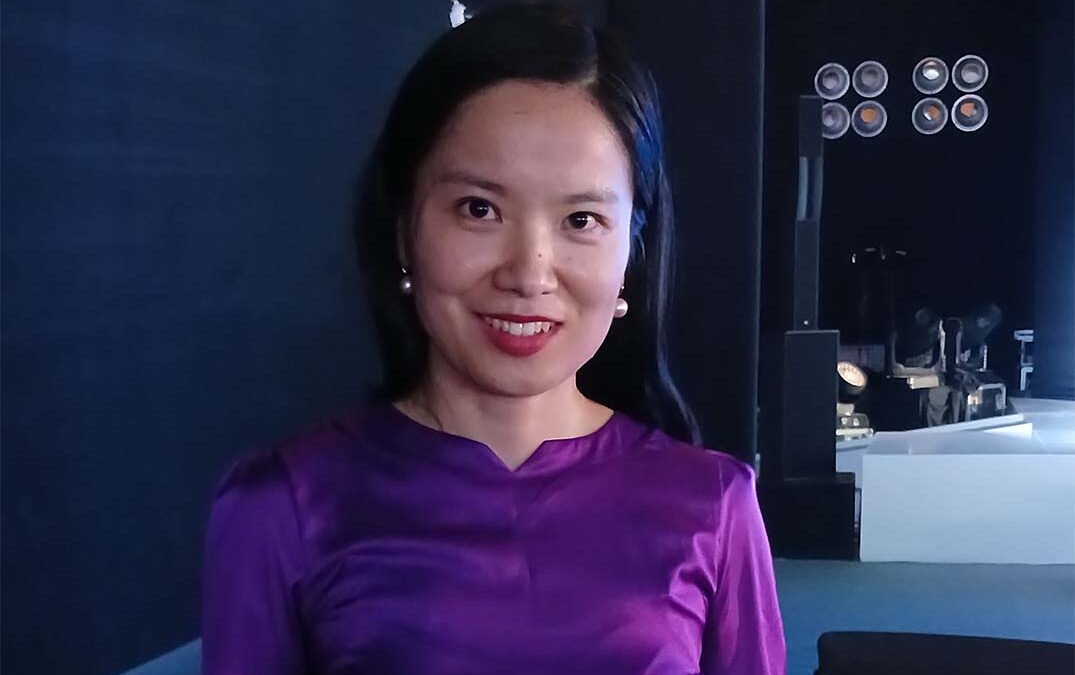Kathy Gibson reports from Gitex Africa Morocco 2024 – Humanity is facing an existential crisis as planet-wide issues like climate change threaten to cause irreparable damage.
But frontier technologies are already on the drawing board that could reverse the damage while allowing us to live happier, healthier and more fulfilled lives, says Dr Christina Yan Zhang, CEO of the Metaverse Institute.
With generative artificial intelligence (GenAI), just about everyone now has the ability to use vast amounts of data to analyse issues and craft solutions, using natural language prompts.
But AI is not a new phenomenon, and has already been through two boom periods and two winters since it was first touched upon around 70 years ago. The difference now is that rapid developments are making it possible to craft text, images, videos and – coming soon – 3D objects to create immersive environments, Dr Zhang says.
Already, Nvidia is using AI, machine learning (ML) and large language models (LLMs) in gaming to allow non-traditional character players to respond to the enquiries of every player in a dynamic way. “This is ground breaking,” she says. “It means that, in every industry, we may soon be able to interact with AI in an immersive environment and get highly personalised responses 24/7.”
While she doesn’t believe we’ll get to a Terminator-style scenario with AI, Dr Zhang says the issue of job automation rightly has people worried, with up to 60% of jobs at risk.
Instead of panicking, she advises, we need to go back to the basics. “It doesn’t matter what technology is trending now. Any technology will be popular for a while and then die down. The point is, it doesn’t matter: what is really important is how technology can be used as a tool to support the wellbeing and happiness of people.”
This is the vision of a people-centred digital future, which scientists are already piloting in the Tampere metaverse in Finland.
This project is looking at how to use technology to address the five issues that governments must take care of: people’s happiness, sustainability, equality, governance, and wellbeing and healthcare. It also examines the opportunities and risks of AI, and how frontier technologies will develop and impact society.
The first observation is that we are seeing a convergence of the physical and digital worlds, through the increasing use of digital twins.
Dr Zhang points out that individuals can now have their own digital twins, which can be used to help them stay healthy and happy.
Meanwhile, advances in the built environment can help us to reduce our carbon footprint by up to 50% through the effective implementation of smart city technologies.
As an example, Dr Zhang points to Wellington in New Zealand that is using open platform digital twin technology to help address rising sea levels, with tangible results.
Singapore is in the process of developing a countrywide digital twin, modelling the entire country, and already using it to optimise solar panel placement to help it achieve its net zero targets.
The European Union is going a step further and developing a digital twin of the earth. This will let governments around the world use simulated models to predict disasters so they can take steps to prevent or mitigate them. “This could benefit hundreds of millions of people,” Dr Zhang points out. “And it will help Europe to become the first carbon-neutral continent.”
As the physical and digital worlds merge, there has been a lot of speculation about the development of brain computer interfaces. These range from a chip implanted into the brain, to one introduced to the brain via the bloodstream. But less invasive technologies are being developed now, including an in-ear device that can be inserted and removed according to the user preference.
As AI is employed to help us solve some of the world’s big problems, we have to be cognisant of some of the new issues this creates.
For instance as data grows exponentially, we could soon run out of storage space.
Perhaps new technology being tested by Microsoft and the Massachusetts Institute of Technology (MIT) could succeed in creating synthetic DNA to store and transfer data, Dr Zhang says.
“This would be extremely durable, and carbon emission-free. It is also very dense, offering 1-million times the storage capacity of existing storage technology.”
As we come to the limits of available computing power, a possible solution is already available in the form of quantum computing – once we solve the challenge of quantum-safe technologies like blockchain.
Money is another challenge that the world has to find a solution to. With so much global debt, and the need for massive investments to stop climate change, tokenisation could be the solution.
“If we tokenise all of our assets, including income and debt, we could create six times the global GDP in value,” Dr Zhang explains. “Some Africa countries are already looking to tokenisation to resolve their national debt; and both the International Monetary Fund (IMF) and World Bank could consider using it to support global goals.”
While we are increasing our use of AI, its impact on the environment is not good, Dr Zhang adds. Indeed, training just one LLM uses the same amount of energy as 300 aeroplane flights from San Francisco to Europe.
A possible solution could be nuclear fusion, which holds the promise of being able to power the planet for another 100-million years, carbon emission-free.
As we look to frontier technologies to support the digital future, Dr Zhang says Africa could become the innovation powerhouse of the future.
She points out that by 2100 40% of the world’s population, and half of its youth, will be African. “You will have the most innovative generation, and can use technology to make the world a better place for all humanity.”

